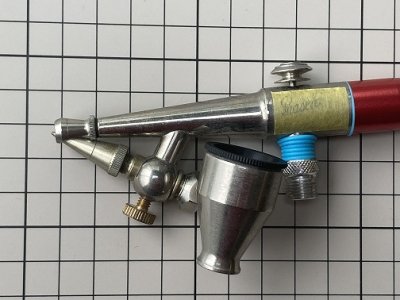tatocorvette
Mac-Valve Maestro!
Hello,
The Paasche Model H is most likely the most popular and famous single action external mix airbrush. While it has evolved over the years, this model has been in production for over 100 years in the same basic design! Due mostly to its reliability and simplicity, it has a strong cult following as a workhorse. This airbrush can flow a lot of material and use a lot of air. It is not the right tool for the smallest ultra fine detail. Many consider it a "fire hose".
I've never had a Paasche before, but many modelers rave about the H. So when I found this tired puppy online for less than $10, I had to rescue it!
The serial number on the box matches the airbrush.
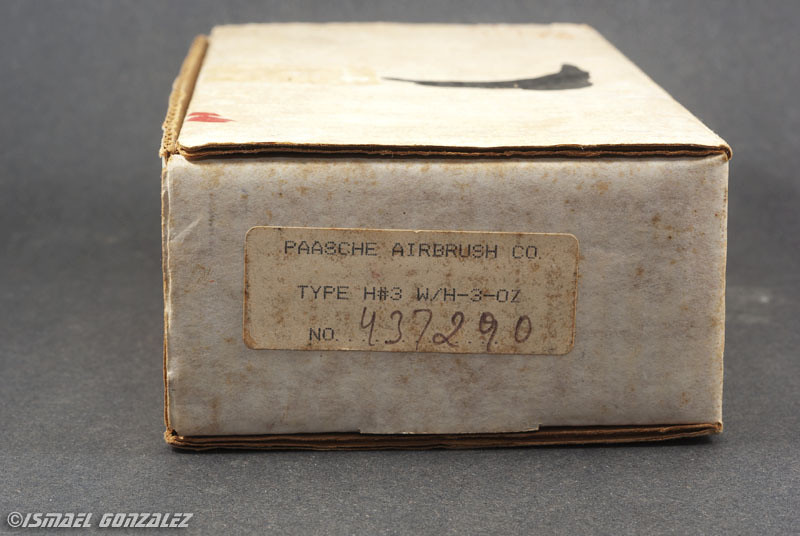
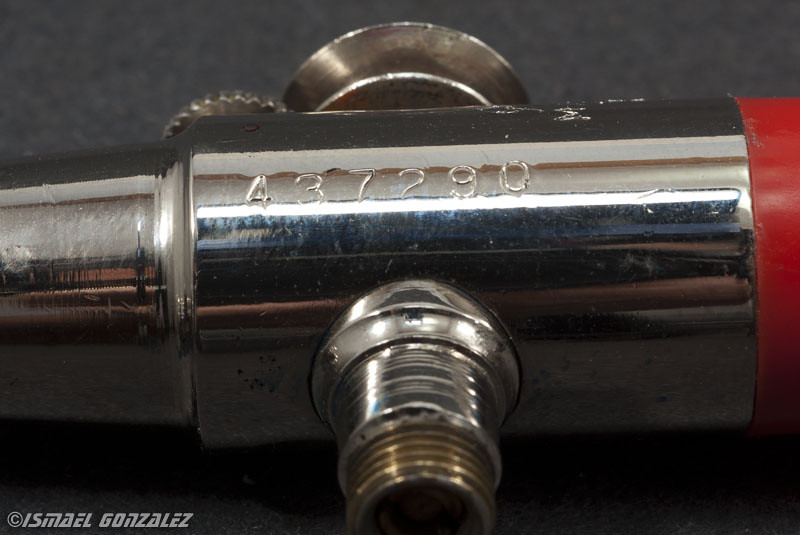
Only the airbrush itself, the bottom tray and the warranty card were included. No other accessories like the cup or wrenches were included.
The warranty card says 1977. I guess it is a print year so I think it is safe to assume this is from the late 70's.
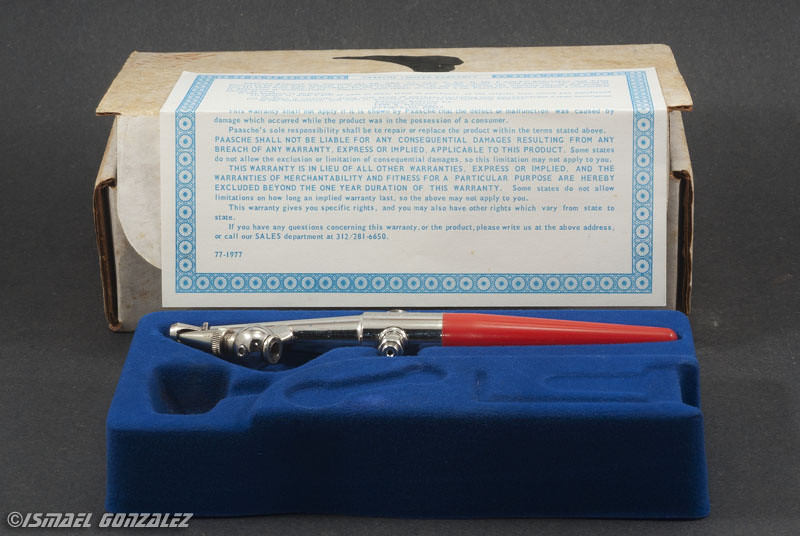
It looks dull and upon closer inspection, it evidently needs a good cleaning. I wouldn't call this exactly a restoration, but more of a seriously deep clean. This simple design is easy to take apart.
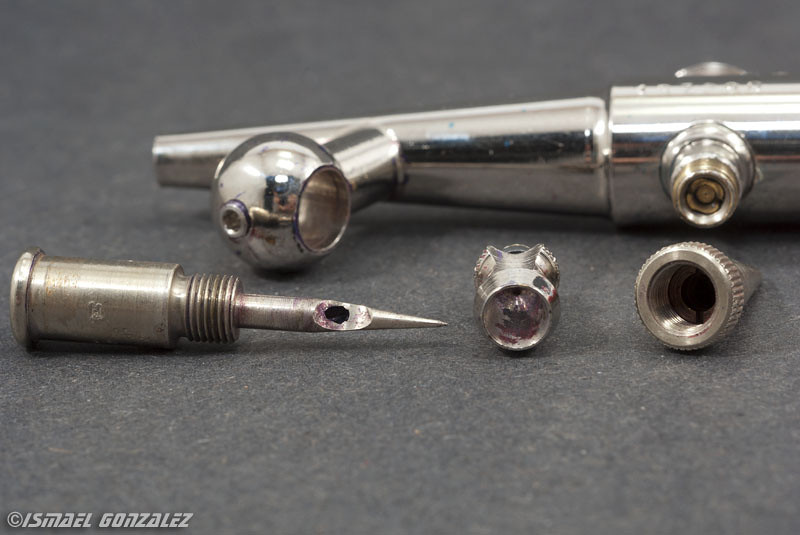
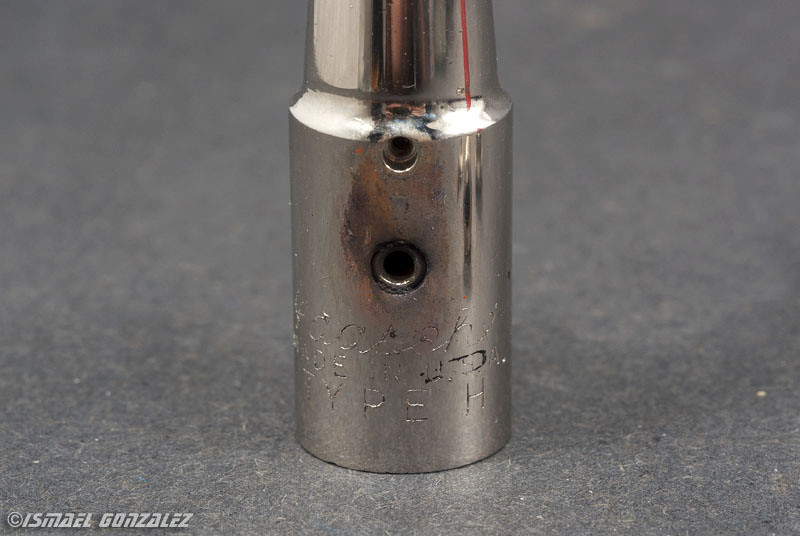
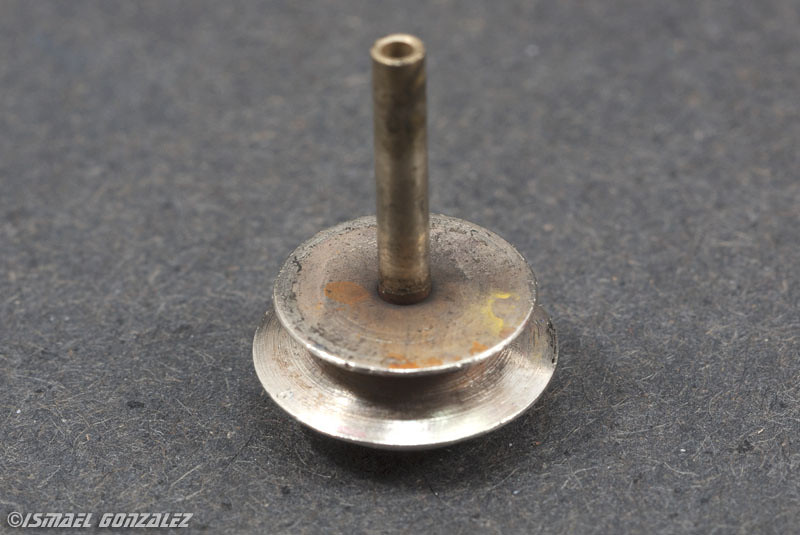
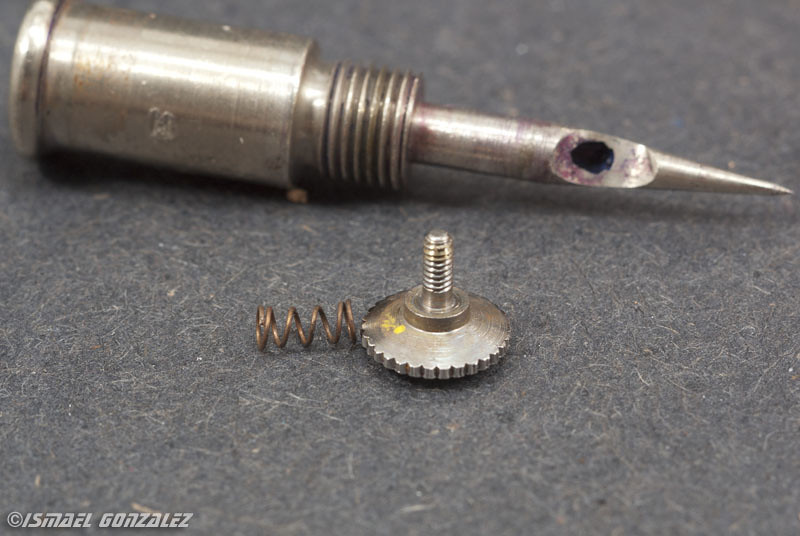
This sample has the #3 setup. The box label also indicates Type H #3. This is the medium setup. Available is a smaller #1 setup, this #3 and #5 which is THE Fire Hose

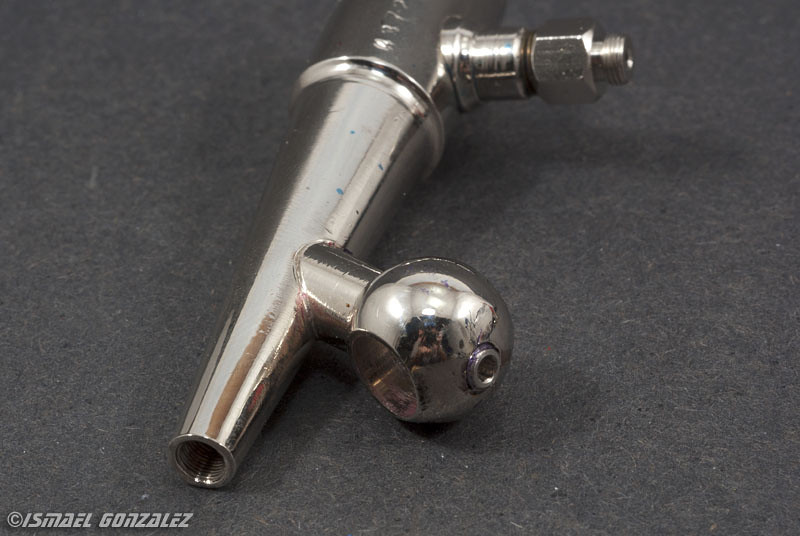
Every part was carefully cleaned inside and out. Then polished and polished and polished some more. The plastic handle was polished with automotive polishing products.
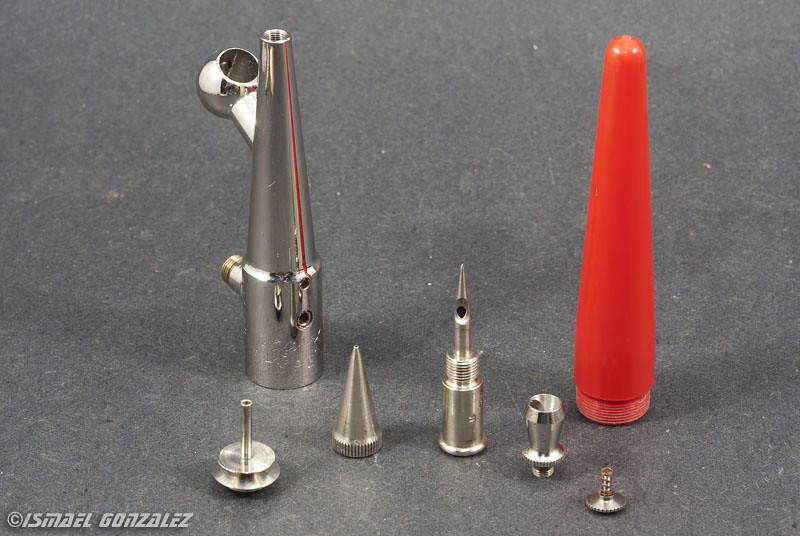
Eventually everything went back together.



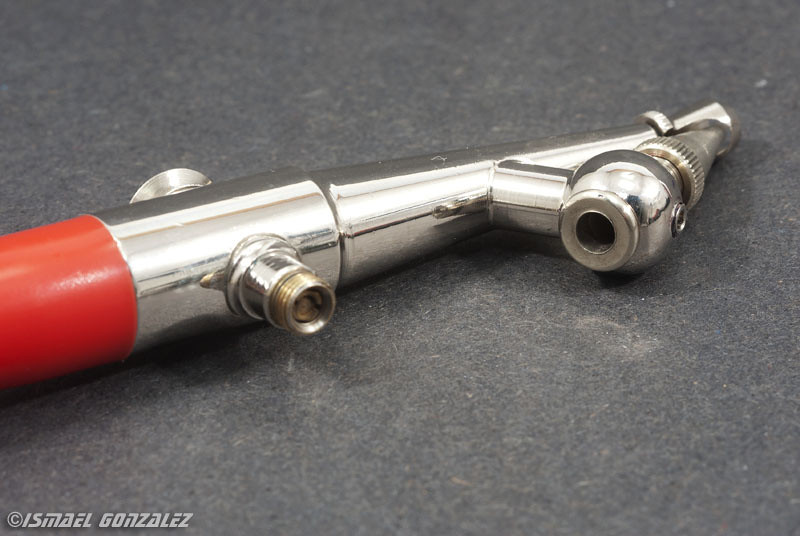

Peek a boo!

At the same time I ordered an adaptor to use my Badger hoses.

Now all I need is the time to test it! I'll keep you posted.
Hope you like it.
Thanks,
Ismael
The Paasche Model H is most likely the most popular and famous single action external mix airbrush. While it has evolved over the years, this model has been in production for over 100 years in the same basic design! Due mostly to its reliability and simplicity, it has a strong cult following as a workhorse. This airbrush can flow a lot of material and use a lot of air. It is not the right tool for the smallest ultra fine detail. Many consider it a "fire hose".
I've never had a Paasche before, but many modelers rave about the H. So when I found this tired puppy online for less than $10, I had to rescue it!
The serial number on the box matches the airbrush.


Only the airbrush itself, the bottom tray and the warranty card were included. No other accessories like the cup or wrenches were included.
The warranty card says 1977. I guess it is a print year so I think it is safe to assume this is from the late 70's.

It looks dull and upon closer inspection, it evidently needs a good cleaning. I wouldn't call this exactly a restoration, but more of a seriously deep clean. This simple design is easy to take apart.




This sample has the #3 setup. The box label also indicates Type H #3. This is the medium setup. Available is a smaller #1 setup, this #3 and #5 which is THE Fire Hose


Every part was carefully cleaned inside and out. Then polished and polished and polished some more. The plastic handle was polished with automotive polishing products.

Eventually everything went back together.





Peek a boo!

At the same time I ordered an adaptor to use my Badger hoses.

Now all I need is the time to test it! I'll keep you posted.
Hope you like it.
Thanks,
Ismael


